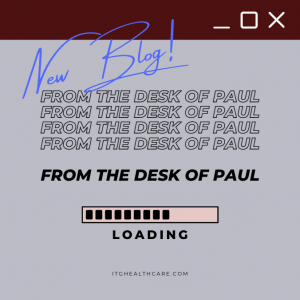Do You Have An Emergency Operations Plan?
Has there ever been a more critical time for nearly every organization to test their business continuity plans if they have one? If your business does not have one, then there has never been a better time to stop procrastinating and put this task at the top of your list. While I have talked to many business owners, CEOs and COOs about this topic, in the small business arena, I get the impression that many of them struggle to know where to start.
Let’s start with some resources. Someone shared this “Emergency Operations Plan” template with me and I was very impressed! As a firm believer in “don’t recreate the wheel”, I am always looking for solutions that someone else has already perfected to common problems. This template fits the bill, because it not only does it provide the necessary detail to be effective for what we are trying to accomplish, but the notes in the right margin are wonderful for providing a great explanation for the who, what, how and why for the various sections of the plan. Other templates leave something to be desired with a cookie-cutter approach that doesn’t always fit and very little explanation. The resource provider in this case is an organization called Planet Ready. This organization provides a plethora of resources for disaster and emergency preparedness. Click here for the Emergency Operations Plan template.
By definition, a Business Continuity Plan is simply a plan for uninterrupted operations despite some abnormal circumstance that has the potential to impact normal business operations. Here are some easy ways to get started on the seemingly overwhelming task of creating a Business Continuity Plan:
- Start with important contacts. List the contact information for all essential people – both within your organization and external to your organization. Having all of these contacts in one place will be extremely helpful.
- Identify your core business functions. Most organizations will have core functions in the areas of Administration/Human Resources, Sales and Marketing and Operations. It is important to think about those functions that take priority over others relative to how critical they are to keep the business operational.
- Map out in a little more detail those core functions that have greater priority. What are those roles and responsibilities? Who owns those roles and responsibilities?
- From the previous three bullet points, you can now start to consider alternatives for how to fulfill the critical responsibilities considering a multitude of business disruptions. By working through each of those, one by one, you can now make considerable progress towards the development of your business continuity plan.
While the above points and the template provided certainly are not a complete process for developing a business continuity plan, they are more than enough to get you moving in the right direction. As our partner, ITG is prepared to assist you with this process to get your business continuity planning done. If you are not our partner, then please do not hesitate to reach out to me. This is just one of the many challenges that we take off the plates of our clients so that they can focus on their core business!
Paul Meadows,
President/CEO








